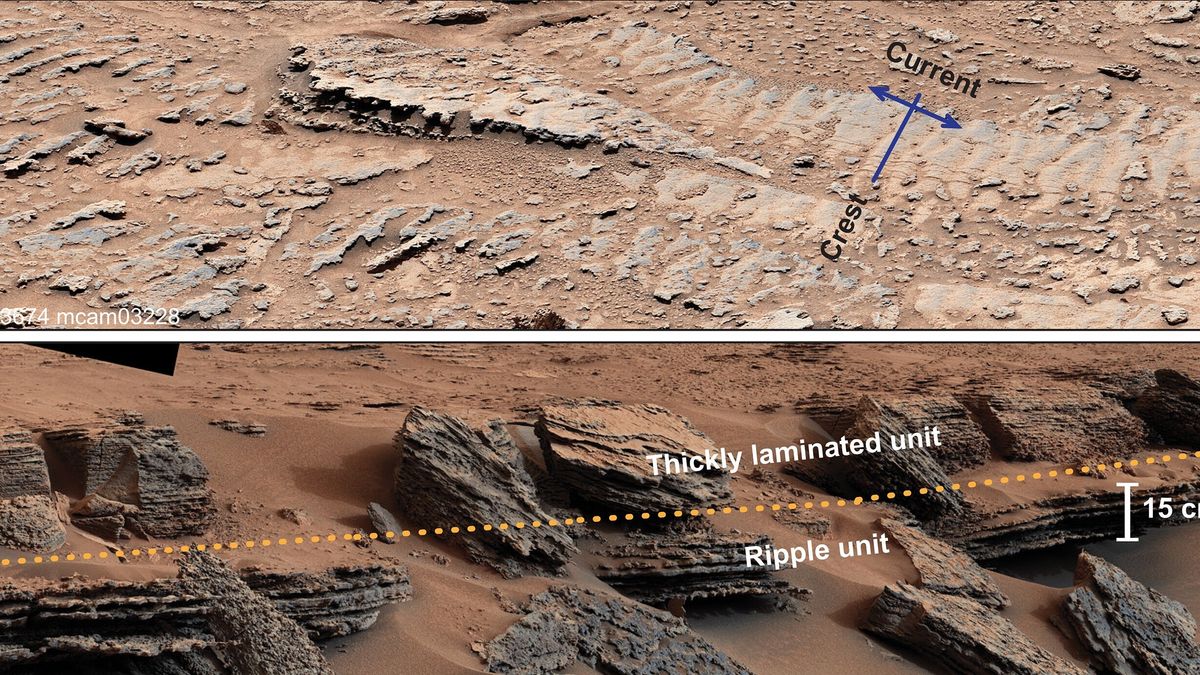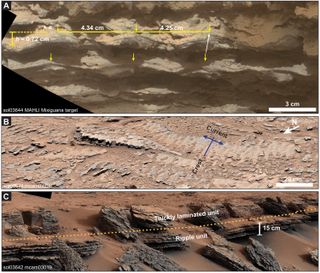
New research has uncovered compelling evidence that ancient shallow lakes on Mars once contained liquid water exposed to the atmosphere. This finding contradicts certain Martian climate models that propose all water on the Red Planet was encapsulated in ice.
For many years, planetary geologists and astronomers have theorized that water existed on Mars. This speculation gained traction when images of arid gullies were documented during NASA‘s Mariner 9 mission in the 1970s. However, experts have debated the forms this water took and the duration of its existence. Some models suggest that liquid water on Mars’ surface was likely covered by ice layers before it eventually vanished.
However, the recent findings published on January 15 in Science Advances present a new perspective. The patterns observed and captured by NASA’s Curiosity rover, known as wave ripples, are tiny ridge-like formations found along ancient lakebeds. This indicates that liquid water must have flowed freely over Mars’ surface at some point in its past. The ripples have been identified in two distinct lakebeds located in Gale Crater, which Curiosity has been actively studying since August 2012.
“The unique shape of these ripples could only have formed in water that was exposed to the atmosphere and influenced by wind,” stated Claire Mondro, the lead author and a sedimentologist at CalTech, in a statement.
Related: 32 intriguing anomalies on Mars
Could Life Have Existed?
Researchers examined the height and spacing of the ripple formations to deduce the size of the ancient lake. These structures are roughly 0.2 inches (6 millimeters) tall and positioned about 1.6 to 2 inches (4 to 5 centimeters) apart, suggesting they were generated by small waves. Based on these measurements, scientists conclude that the Martian lake likely had a depth of less than 2 meters (6.5 feet).

Both lakebeds are estimated to have formed roughly 3.7 billion years ago, suggesting that Mars possessed a warm and dense atmosphere that could sustain liquid water for a longer duration than previously assumed. “This extended timeframe for the presence of liquid water enhances the potential for microbial life to have existed deeper into Mars’s history,” Mondro explained. This implies that life may have had an enhanced opportunity to evolve on the Red Planet.
Over billions of years, much of Mars’ atmosphere and surface water was lost, mainly due to the planet’s loss of its magnetic field, which made it susceptible to solar radiation. Consequently, the relentless solar wind eroded much of Mars’ carbon dioxide and water, leading to the cold, arid landscape recognized today.
Take the Mars Quiz: How well do you know the Red Planet?









